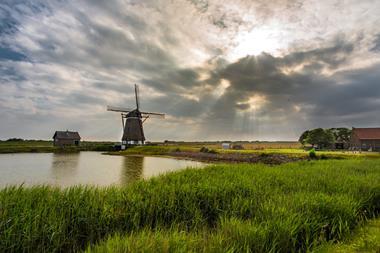The funding of the five largest Dutch pension funds improved by several percentage points during the third quarter, in particular due to investment results of up to 1.9%.
However, with the exception the €55bn scheme for the building industry (BpfBOUW), they are still in danger of possible rights cuts during the coming years, quarterly reports indicated.
As interest rates have risen only very slightly since June, liabilities of the schemes barely decreased.
The €396bn civil service scheme ABP, which reported a quarterly return of 1.9%, saw its coverage ratio jump by 3 percentage points to 99.3%.
Nevertheless, it indicated that it could see little margin for indexation during the next five years and that rights cuts could still be possible.
To avoid a pensions reduction, its funding must exceed 104.2% before 2021.
The civil service scheme reported yields on equity of 1.4% and 4.5% for developed and emerging markets, respectively.
It said that returns on fixed income were flat, as results of 0.3% from government bonds and 0.6% from inflation-linked bonds had been cancelled out by losses on credit (-0.5%) and emerging market debt (-0.4%).
ABP’s commodities holdings returned 4.6% during the third quarter, but remained at an 11.6% loss for the year to the end of September. Infrastructure holdings gained 0.7%, while hedge funds and property lost 1.6% and 0.3%, respectively.
The pension fund attributed its year-to-date result of 3.9% chiefly to equity and its currency hedge, which had generated 7.5% and 3%, respectively this year. Emerging markets equity delivered 11.6%.
The €189bn healthcare scheme PFZW closed the third quarter with a 1.7% profit, leading to a cumulative result of 1.4% for the first three quarters of the year. Its funding at September-end stood at 96.7%.
It said liquid equity and private equity had generated 1.3% and 2.1%, respectively, over the last quarter. Infrastructure gained 2.6%, but its real estate and insurance portfolios lost 0.7% and 8.1%, respectively.
PFZW’s government bond holdings returned 0.6% following a slight drop of long-term interest rates. Its index-linked bonds gained 5.7%.
PMT, the €68bn scheme for the metal working and mechanical engineering sector, reported a quarterly profit of 1.1% and a year-to-date result of 1.4%.
It said its matching portfolio produced a quarterly return of 0.1%, while its return portfolio grew by 2%.
PMT’s stakes in property and high yield gained 0.6% and 1%, respectively. Equities, including private equity, generated 2.6%. The scheme closed the third quarter with a coverage ratio of 98.9%.
PME the €45.6bn pension fund for the metal and electrotechnical engineering industry, posted a quarterly profit of 1.3% and a cumulative result for 2017 of 2%.
It cited year-to-date returns of 10.1% for equity, 3.6% for high yield and 3.2% for property. Alternatives including private equity lost 0.1%. Its funding stood at 98.4% at quarter-end.
With a coverage of 113%, BpfBouw remained in the best financial shape of the five largest schemes. It returned 1.8% for the quarter and has gained 2.6% between January and September.







No comments yet